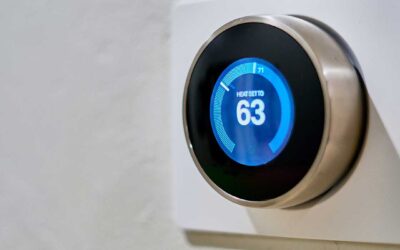A couple recent New York Times articles regarding the quality of compact fluorescent bulbs set off a firestorm of comments. The thrust of the most recent article was that, while CFLs can meet people’s needs, meeting their expectations is tougher. CFLs in stores are of variable quality, and the incumbent technology sets a high bar: incandescent bulbs produce more flattering light, can be dimmed without any ado, don’t suffer quality problems, and fit nicely into lighting fixtures which, after all, were made for them.
To test the article’s assertions against my real-world experience, I offer this review, as honest as I can make it, of my fluorescent lighting one year after we completed a whole-house changeover. I have one incandescent bulb left; everything else is fluorescent or halogen. I purchased one fluorescent bulb via a specialty store, but I found all others at standard retail outlets like club stores or hardware stores.
**Successes**
* We have several CFLs that shine their light through a fixture, such as a glass shade, a frosted glass globe, or a Japanese-style paper lantern. We have had no problem finding CFLs to fit into these fixtures, and the light quality is very good, not easily distinguished from incandescent.
* We have three rooms lit by torchiere-style lamps that point light toward the ceiling. Two of these lamps use circular fluorescents (“circline”), and one uses two 23-watt CFLs. All of these have some success (see also the challenges). In one room, I love the way the circline’s light looks against the walls and ceiling. This room is painted a distinctly bright green, and was painted after we went fluorescent. The two-bulb torchiere is a success because it has settings for one or both bulbs, thus solving the dimming requirement without any fancy ballasts or bulbs. Finally, the third and largest room uses a custom lamp-and-circline-bulb combo from an online retailer. This one has a proper and very effective dimmer, and is the only torchiere that provides as much light as the 300-watt halogen we used to have in its place.
* Our bathrooms have strip-style fixtures above the mirror that used to hold clear incandescent globes. Now they hold globular frosted white bulbs with the CFLs tucked inside. I love these bulbs. The original bulbs gave off so much heat and so much light (the fixtures hold 8 bulbs) that we kept at least two sockets empty (yes, very attractive). Now, all the sockets are full and the heat load is down. And perhaps because the CFLs are shining through a frosted bulb-cover, the lighting quality is just fine.
* Our switched porch lights are standard CFLs inside a fixture. These are great. We only leave the light on when we are expecting someone, but it is often on for hours at a time. An excellent CFL application.
* Our garage is lit by linear fluorescent tubes. These things are workhorses; they provide lots of light, and their length decreases “dark corners.” Also, the tubes are inexpensive and last a long time.
**Challenges**
* Warm-up time. Virtually all of our CFLs seem to require warm-up before reaching full brightness. This can take anywhere from thirty seconds to several minutes, and seems to get worse as the bulb ages. In applications where we have several lights on one switch (such as the two-bulb torchiere or our bathroom fixtures), this effect is negligible because there is enough light when the switch is flipped. However, in cases where there is just one lamp on a switch, the lighting can be very dim — like, lunar — at the outset.
* Brightness. Our bedrooms have no overhead lighting; instead, they have switched outlets. We plug a lamp into the switched outlet to get room lighting. It has been very challenging to find a fluorescent solution that is sufficient to light a whole room with a single lamp. We used to have halogen torchieres or 150-watt bulbs for this job. The custom and two-bulb torchieres are our solution, but these were expensive and hard to find.
* Color. In applications where the bulb is providing unshaded light, the lighting quality and color is much whiter than an incandescent. The only place this really bothers me is the large bedroom with the dimmable custom-bulb torchiere. The room is painted white and the only way to describe the color is “fluorescent.” Next time, I’ll buy the “daylight” color bulb instead.
* Variation. Most noticeable in our bathroom fixtures which sport eight CFLs all in a row, the CFLs have distinctly varying colors, especially as they are warming up. They vary from sharp white to dull white to purple.
* Outdoor floodlights. We have these for two purposes: one is to light the backyard area when we are at the BBQ. The other is to light the way to the trash cans. The first one works great as a CFL. But the trashcan light is so dim when it first lights up that it may as well not be on at all. And since a trip to the trash takes about 30 seconds, we never get the benefit of the brightness. In fact, we tend to forget we turned it on until several minutes later when we notice that it seems awfully bright outside.
For these reasons, I do recommend CFLs for sustained outdoor applications, but I do not recommend them for motion-sensor applications, nor for quick trips to the bin.
All in all, the only things I would do differently are the trash-can light and the colored bulb in the bright torchiere. I am tolerant, though, and I suspect others would be less so. If I could send one message to the manufacturers, it would be to fix the warm-up issue.
Brought to you by terrapass.com
Featured image







